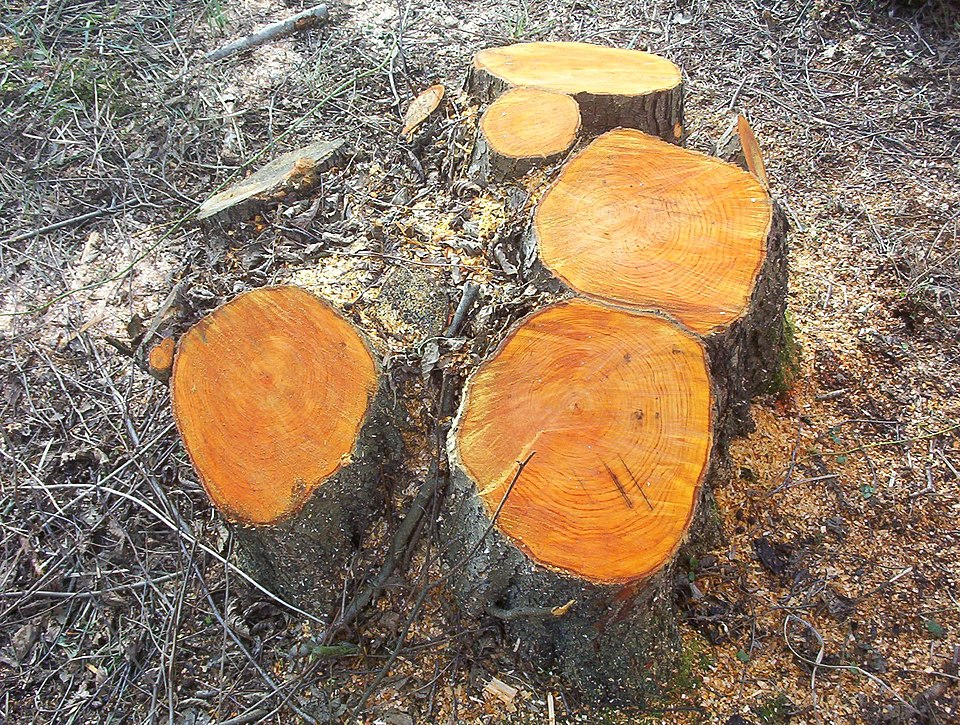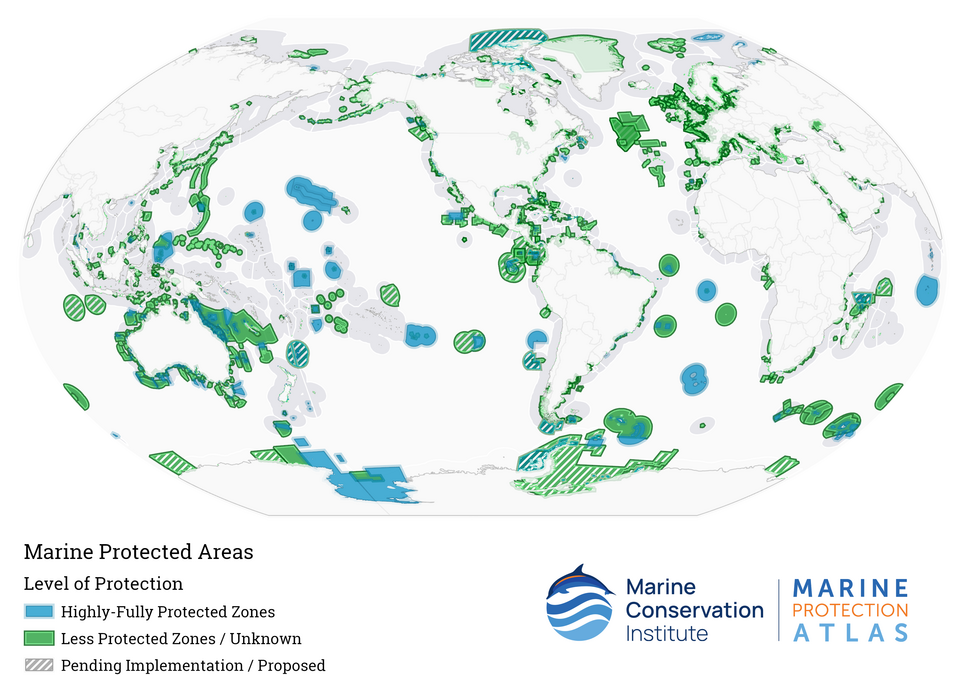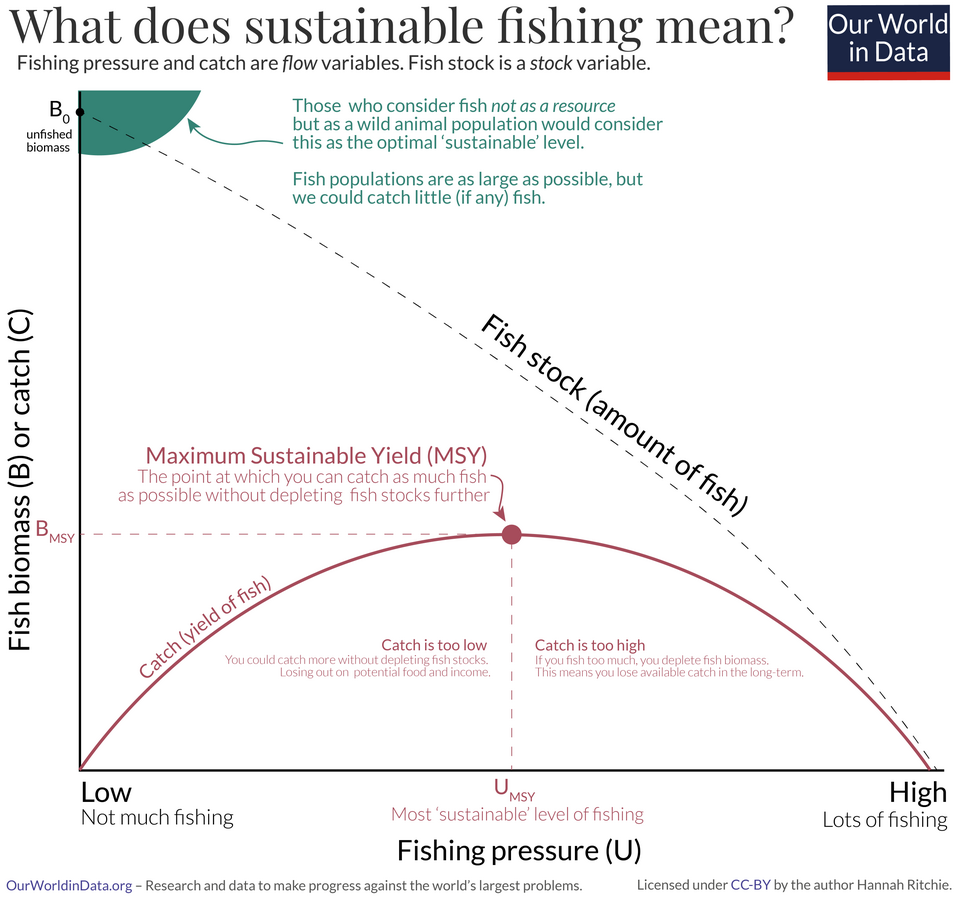OCR Specification focus:
‘Explain how ecosystems are managed to provide resources sustainably, with examples from timber production and fisheries.’
Sustainable resource management ensures that ecosystems continue providing vital resources without compromising future generations. It involves balancing environmental health, economic viability, and human needs through careful monitoring and management practices.
Sustainable Resource Management: Overview
Sustainable resource management refers to the maintenance and use of natural resources at a rate that allows for natural regeneration and long-term ecosystem stability. Humans rely on ecosystems for timber, food, water, and energy, but unsustainable exploitation can lead to habitat destruction, biodiversity loss, and resource depletion. Therefore, sustainability requires an integrated approach that combines ecological science, economic policy, and community participation.
Sustainable Resource Management: The controlled use of natural resources so that ecological balance and biodiversity are maintained while meeting human needs for materials and energy.
This approach is central to conservation biology and is vital for mitigating climate change and preventing overexploitation.
Principles of Sustainable Management
Effective management aims to maintain the structure, productivity, and biodiversity of ecosystems while supporting human livelihoods. The key principles include:
Renewability – Using resources at a rate that does not exceed their natural regeneration capacity.
Biodiversity protection – Maintaining ecosystem diversity to ensure resilience and ecological balance.
Economic viability – Ensuring that resource use remains profitable and beneficial for local communities.
Equity and ethics – Sharing resources fairly and respecting both human and non-human life.
Monitoring and adaptation – Using scientific data to adjust practices in response to environmental changes.
Timber Production: A Case of Sustainable Management
Forests are a critical renewable resource, providing timber, carbon storage, and habitats. However, deforestation and clear-felling can lead to soil erosion, habitat loss, and decreased biodiversity. Sustainable forestry techniques address these issues through selective felling, replanting, and rotation cycles.
Selective Cutting
Rather than removing all trees, only mature specimens are felled. This maintains canopy cover and allows young trees to grow. It also reduces the risk of soil erosion and habitat destruction.
Coppicing and Pollarding
These are traditional, sustainable practices in which trees are cut near ground level (coppicing) or higher up (pollarding), allowing new shoots to regrow from the stump.
Coppicing promotes continuous wood supply without replanting.
Pollarding prevents grazing animals from eating regrowth.
Both methods support long-term productivity and biodiversity.

A recently coppiced alder (Alnus glutinosa) showing multiple shoots regrowing from the stool. This illustrates how coppicing enables repeated harvests without replanting, maintaining canopy structure and habitat complexity. The photo contains only the essential detail needed for this concept. Source.
Rotational Felling
Forests are divided into sections harvested in sequence. Each section regenerates before being cut again. This ensures a continuous timber supply and prevents complete ecosystem loss in any one area.
Rotational Felling: The process of dividing a forest into areas that are felled and replanted sequentially, allowing sustainable timber harvest while maintaining forest structure.
Replanting and Mixed Species Forests
After felling, trees are replanted to sustain resource availability. Using mixed species rather than monocultures reduces vulnerability to pests, disease, and climatic change, promoting long-term resilience.
Fisheries Management: Maintaining Marine Sustainability
Oceans provide food and employment for millions, but overfishing threatens marine ecosystems. Sustainable fisheries management uses biological data and regulatory frameworks to prevent stock depletion and ecosystem collapse.
Quotas and Licensing
Governments set catch quotas, limiting how much of each species can be harvested annually. Fishing licences regulate who may fish and where, helping control pressure on vulnerable populations.
Mesh Size Regulations
By enforcing minimum net mesh sizes, smaller, juvenile fish can escape, allowing them to grow and reproduce. This prevents premature harvesting and supports natural population recovery.
Closed Seasons and Marine Protected Areas (MPAs)
Closed seasons restrict fishing during breeding periods, ensuring species can reproduce successfully.
MPAs are designated zones where fishing and other activities are limited or prohibited to allow ecosystems to regenerate.

High-resolution world map of Marine Protected Areas (as of Nov 2022), indicating regions with high or full biodiversity protection. This visual contextualises MPAs as a widely applied sustainability instrument in fisheries management. The map includes country-level coverage detail beyond the syllabus but remains directly supportive of the concept. Source.
Aquaculture (Fish Farming)
Fish farming can supplement wild catches, reducing pressure on natural populations. Sustainable aquaculture:
Minimises pollution and disease spread.
Uses recirculating systems to reduce waste.
Avoids excessive use of wild-caught feed fish.
However, if poorly managed, aquaculture can lead to eutrophication and escape of non-native species, which disrupt wild populations.
Monitoring and Adaptive Management
Sustainable resource management is dynamic. Conditions change due to climate variation, pollution, and human demand, so practices must evolve accordingly. Regular ecological monitoring collects data on population size, biomass, and regeneration rates. These data inform adaptive management decisions, ensuring sustainable yield.

Graph of maximum sustainable yield (MSY) showing population growth versus harvest rate, with MSY near K/2. This diagram helps explain why quotas above MSY drive stock decline, while harvests at or below MSY can be maintained. The figure includes standard fisheries notation consistent with A-level treatment. Source.
Sustainable Yield: The level of resource extraction that can be maintained indefinitely without depleting the population or damaging the ecosystem.
EQUATION
—-----------------------------------------------------------------
Sustainable Yield (SY) = Rate of Production (P) – Rate of Natural Mortality (M)
P = Population growth or biomass increase per year (kg or individuals/year)
M = Biomass lost through natural death or predation per year (kg or individuals/year)
—-----------------------------------------------------------------
Monitoring systems often include remote sensing, population modelling, and satellite tracking to evaluate stock levels and ecosystem health.
Human and Economic Dimensions
Sustainability extends beyond ecology—it involves social responsibility and economic balance. Human populations depend on resource-based industries for livelihoods, but exploitation must be guided by long-term ecological awareness.
Economic incentives (such as certification schemes like FSC for timber or MSC for fisheries) encourage sustainable consumer choices.
Community-based management ensures local people share in the benefits and decision-making.
Education and awareness programmes promote understanding of ecological limits and stewardship ethics.
Integration of Conservation and Use
True sustainability requires integrating conservation (protecting species and habitats) with resource use. This balance maintains ecosystem services, including nutrient cycling, pollination, and climate regulation. Practices such as agroforestry, buffer zones, and wetland restoration enhance both productivity and ecological integrity.
By managing ecosystems through scientifically informed, ethically grounded, and economically viable strategies, sustainable resource management ensures that natural capital continues to support both human and ecological wellbeing.
FAQ
Selective felling removes only certain trees—usually mature or diseased ones—while leaving younger or more diverse species to continue growing.
This maintains a varied canopy structure, supports multiple light levels, and preserves habitats for different organisms. By avoiding clear-felling, selective felling prevents soil erosion and keeps nutrient cycles stable.
It also promotes natural regeneration, allowing the forest to sustain its species richness and ecological complexity over time.
Sustainable fisheries management faces several difficulties:
Enforcement issues: Illegal, unreported, and unregulated (IUU) fishing undermines quotas and regulations.
Data limitations: Accurately estimating fish stocks is complex and often uncertain.
Economic pressures: Demand for seafood can push governments to prioritise short-term profit over long-term sustainability.
Climate change: Shifting ocean temperatures alter fish distributions and breeding patterns, making management harder.
Balancing ecological protection with social and economic needs remains one of the biggest challenges.
Certification schemes such as the Forest Stewardship Council (FSC) and Marine Stewardship Council (MSC) ensure that products originate from responsibly managed sources.
They promote transparency by setting environmental, ethical, and social standards for production. Certified producers must:
Replant and maintain forest ecosystems (FSC)
Avoid overfishing and protect bycatch species (MSC)
Consumers can identify certified products through logos, encouraging market-driven sustainability and rewarding ethical practices.
Modern technologies make management more accurate and responsive. Examples include:
Satellite imaging to track forest loss and regrowth.
Acoustic sensors and GPS tracking to monitor fish movements and illegal fishing.
Remote sensing for assessing biomass changes and habitat condition.
Data modelling to predict population trends under different harvesting scenarios.
These tools provide real-time feedback, allowing adaptive management that responds quickly to ecological changes or overexploitation risks.
Unsustainable management leads to a cascade of environmental impacts:
Habitat destruction reduces biodiversity and disrupts food webs.
Soil degradation and erosion follow deforestation or poor agricultural practices.
Overfishing collapses populations, affecting predators and entire marine ecosystems.
Carbon imbalance from forest loss contributes to climate change.
Ultimately, ecosystem services—such as water purification, pollination, and nutrient cycling—decline, reducing both environmental health and human well-being.
Practice Questions
Question 1 (2 marks)
Explain what is meant by sustainable resource management and why it is important in ecosystem conservation.
Mark Scheme:
1 mark for definition: Controlled use of natural resources so that ecological balance and biodiversity are maintained while meeting human needs.
1 mark for explanation of importance: Ensures long-term ecosystem stability and prevents resource depletion or habitat loss.
Question 2 (5 marks)
Discuss how sustainable management practices are applied in timber production and fisheries to maintain resource availability.
Mark Scheme:
Award 1 mark per valid point, up to a maximum of 5 marks.
Timber production:
(1 mark) Use of selective felling to maintain canopy cover and soil stability.
(1 mark) Coppicing or pollarding allows regrowth without replanting, maintaining productivity.
(1 mark) Rotational felling divides forests into sections so that regrowth can occur before re-harvesting.
Fisheries:
(1 mark) Setting catch quotas and issuing licences to prevent overfishing.
(1 mark) Establishing Marine Protected Areas (MPAs) or closed seasons to allow breeding and stock recovery.
(1 mark) Regulating mesh size to let juvenile fish escape and mature.

